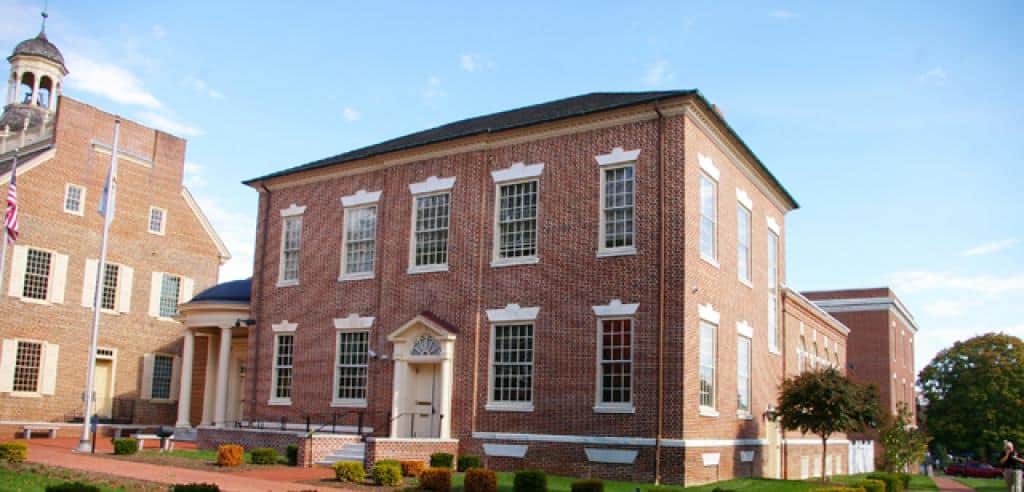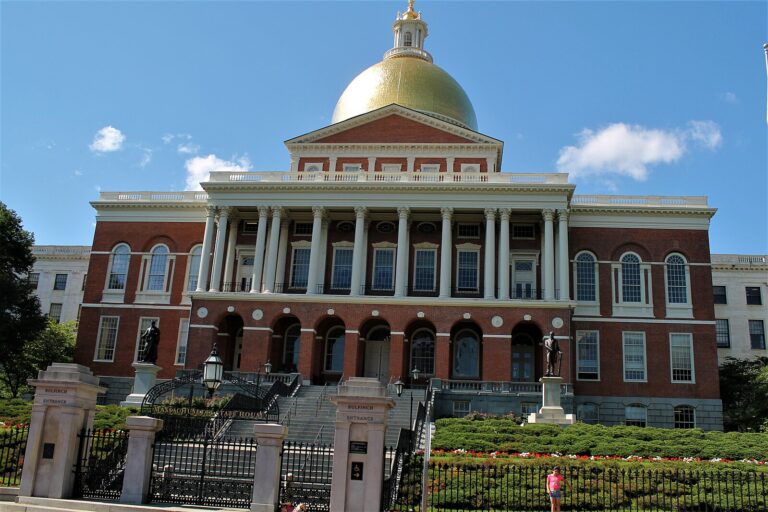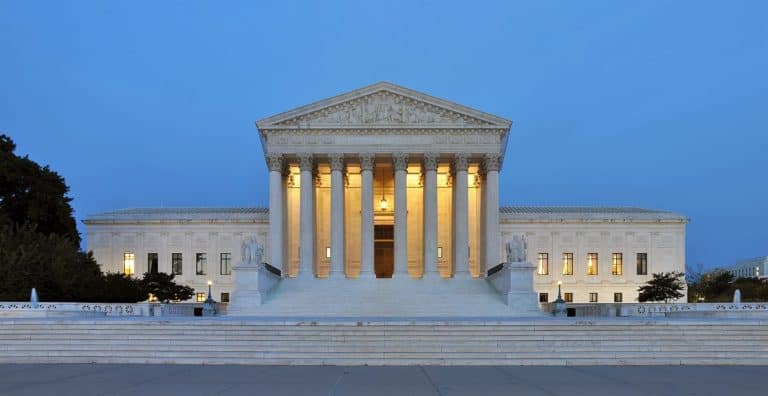
Nathaniel Levy is a student at Harvard Law School and a member of the Labor and Employment Lab.
A recent Third Circuit decision applies the case law on public employees and the First Amendment to appointed state judges, and raises interesting questions about how to design a judicial selection system that both respects the First Amendment and promotes courts’ capacity to act as an independent check on their co-equal branches.
The Delaware constitution establishes that the Governor appoints judges and the state senate confirms them. Once installed, judges serve twelve-year terms. Serving for an additional term requires going through the same process. Unlike some other states, Delaware does not have retention elections, or any judicial elections at all.
Adams v. Governor of Delaware, decided in April, arose from a First Amendment challenge to a provision of the Delaware constitution about the judicial selection process. Article IV, Section 3 requires (or, required) that three of the Delaware Supreme Court’s five Justices “be of one major political party, and two … of the other.” The Adams court refers to these requirements as the “bare majority” rule and “major political party” rule, respectively. Section 3 sets the same requirements for Delaware’s lower courts of general jurisdiction, too.
The Adams plaintiff was a Delaware lawyer who had been a lifelong Democrat but changed his registration in 2017, as he’d come to identify as a Bernie Sanders-style Independent. Adams had previously considered seeking a nomination to the bench. When he did so in 2014, the only open slots on the courts he was eyeing were for Republicans, so he was ineligible on account of the bare majority rule. Becoming a registered Independent, however, totally precluded him from becoming a judge on account of both of Section 3’s rules.
So Adams—buoyed by an argument he encountered in a law review article—mounted a First Amendment challenge to Article IV Section 3, claiming that it violated his constitutional freedom of association rights. Adams won.
Held: Conditioning the appointment of state judges on political patronage is unconstitutional because judges aren’t policymakers.
The suit raised a novel question in the Third Circuit concerning public employees and patronage. Together, three Supreme Court cases — Elrod v. Burns (1976), Branti v. Finkel (1980), and Rutan v. Republican Party of Illinois (1990) — establish the rule that government employers cannot condition employment opportunities (including hiring, firing, promotions, transfers, and recalls) on political patronage without violating the First Amendment. The rationale is that conditioning employment on political loyalty is coercive and, critically, is not a narrowly tailored means of advancing compelling government interests — namely, running an efficient government workplace or ensuring that representative government “not be undercut” by employees with opposing politics.
Importantly, these cases exclude “policymaking” employees from the general prohibition on patronage. Policymaking employees, the Elrod Court figured, are better able to “thwart” government policies than non-policymakers.
The test for identifying policymakers, however, is inexact. There’s no bright line; courts must consider the nature of the employee’s job responsibilities. Acting as an advisor or “formulat[ing] plans for the implementation of broad goals” puts a thumb on the scale for policymaker. But in addition to closely analyzing job duties, courts must also take a step back and consider the political valence of the position. Branti held that the test does not turn on labels so much as whether party affiliation is an “appropriate requirement for the effective performance of the public office.” A state university football coach, for example, is a policymaker whose job performance doesn’t depend on political affiliation. The Third Circuit has hewed closely to Branti.
Adams presented the question of whether appointed judges are policymakers. The court acknowledged that its typical fact-intensive analysis did not translate well to this case, given the unique nature of judges’ jobs. Instead, the court rested its analysis on the principle of judicial independence. Citing various codes of judicial conduct and Delaware case law, the court reasoned that judicial independence from partisan political interests is a bedrock principle of the Delaware (and federal) system of government. Even if state judges do in effect make policy by, e.g., crafting common law, the system presupposes that judicial decisions do not “necessarily reflect the political will and partisan goals of the party in power.” Thus, under Elrod and Branti, judges aren’t policymakers.
Adams produced a circuit split, albeit one that may not generate much interest in a cert petition.
In a 1988 case concerning an Indiana judge’s politically-motivated firing of judges pro tempore, the Seventh Circuit (in a Judge Easterbrook opinion) held that judges are policymakers. The Sixth Circuit later followed suit when analyzing the Ohio governor’s vacancy judicial appointments. Suits concerning patronage and state judges arise infrequently, however, and many states’ systems for installing judges involve elections, which Elrod/Branti/Rutan do not reach.
A door left open: a bare majority rule without the political party requirement.
The Governor also contended that, policymaking exception aside, Section 3 should still survive because the state has a compelling interest in “political balance.” He likened Section 3 to the political balance rules governing the selection of leaders for federal agencies like the SEC. The court rejected the Governor’s argument on narrow grounds. Because it had already found that Section 3 is not narrowly tailored, and then proceeded to find that the bare majority and political party rules were not severable, the court didn’t need to reach the question of whether the state has a compelling interest in political balance. In doing so, the opinion thus leaves open the question of whether a bare majority rule for judges on its own would be constitutional.
What selection rules best promote a strong and independent judiciary?
The court’s holding is correct. Political expression, including association, is at the First Amendment’s core. At minimum, barring Independents from getting seats on the bench treads on individual rights more than it advances a government interest.
But the most thought-provoking part of the case comes in Judge McKee’s short concurrence. McKee recognizes the great irony of the decision. In seeking to diminish partisanship judging, Section 3 embeds it into the process for selecting judges. Section 3 has helped foster Delaware’s global reputation as a fair judicial forum, yet it is unconstitutional. Consistent with the majority’s dicta, though, Mckee appears to mainly praise the bare majority rule, not the political party rule.
The concurrence raises fundamental questions about how to conceive of the courts’ role in our system of government. Even if the court were analyzing a (severed) bare majority rule standing alone, Justice Scalia’s Rutan dissent would still be lurking in the shadows. There, Scalia all but called the majority hypocrites in broadening the default constitutional rule against government patronage systems. After all, although party affiliation isn’t formally a prerequisite for federal judges, everyone knows that appointments are a partisan political contest.
Scalia’s observations are undeniable. Even assuming them to be true in Delaware, however, the political nature of judicial appointments ought not to undermine the legitimate state interest in political balance on the bench. An independent judiciary willing and able to check the other branches is vital. A political balance rule helps strengthen the courts’ capacity to fill that role. Should Delaware amend Section 3 to include only the political balance rule, the Third Circuit should — and, I think, will — uphold it.






Daily News & Commentary
Start your day with our roundup of the latest labor developments. See all
July 4
The DOL scraps a Biden-era proposed rule to end subminimum wages for disabled workers; millions will lose access to Medicaid and SNAP due to new proof of work requirements; and states step up in the noncompete policy space.
July 3
California compromises with unions on housing; 11th Circuit rules against transgender teacher; Harvard removes hundreds from grad student union.
July 2
Block, Nanda, and Nayak argue that the NLRA is under attack, harming democracy; the EEOC files a motion to dismiss a lawsuit brought by former EEOC Commissioner Jocelyn Samuels; and SEIU Local 1000 strikes an agreement with the State of California to delay the state's return-to-office executive order for state workers.
July 1
In today’s news and commentary, the Department of Labor proposes to roll back minimum wage and overtime protections for home care workers, a federal judge dismissed a lawsuit by public defenders over a union’s Gaza statements, and Philadelphia’s largest municipal union is on strike for first time in nearly 40 years. On Monday, the U.S. […]
June 30
Antidiscrimination scholars question McDonnell Douglas, George Washington University Hospital bargained in bad faith, and NY regulators defend LPA dispensary law.
June 29
In today’s news and commentary, Trump v. CASA restricts nationwide injunctions, a preliminary injunction continues to stop DOL from shutting down Job Corps, and the minimum wage is set to rise in multiple cities and states. On Friday, the Supreme Court held in Trump v. CASA that universal injunctions “likely exceed the equitable authority that […]